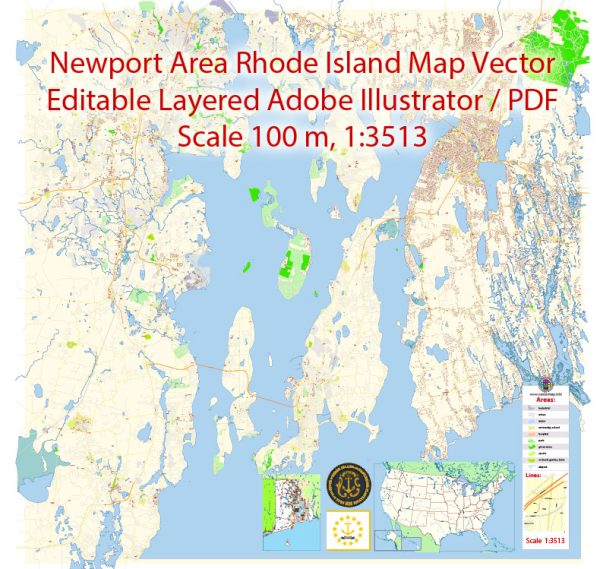Newport, Rhode Island, has a rich history of urban development that dates back to its colonial roots. Here’s an overview of the key aspects of Newport’s urban development:
- Colonial Era (17th-18th centuries):
- Newport was founded in 1639 by a group of settlers led by William Coddington and others. It quickly became a major port city, engaging in trade and shipbuilding.
- The city’s layout was influenced by colonial planning principles, with a grid pattern of streets centered around a market square.
- By the 18th century, Newport had become a prominent center of commerce, attracting merchants and traders from various parts of the American colonies and overseas.
- Revolutionary War and Post-War Period:
- Newport played a significant role during the American Revolution. It served as a base for the British military, and after the war, the city faced economic challenges.
- Many of Newport’s grand colonial-era buildings, including some of the finest examples of Georgian architecture, were constructed during this period, reflecting the city’s historical significance.
- 19th Century:
- Newport experienced a revival in the 19th century as a resort destination for the wealthy elite, especially during the Gilded Age. Mansions, known as the “summer cottages,” were built along Bellevue Avenue by wealthy industrialists like the Vanderbilts and Astors.
- The city’s urban fabric expanded, and infrastructure developments such as the construction of the Newport Casino in the 1880s contributed to its cultural and recreational appeal.
- Gilded Age Architecture:
- The Gilded Age mansions are a significant part of Newport’s urban development history. These opulent structures, including The Breakers and Marble House, showcase architectural styles like Beaux-Arts and Italian Renaissance Revival.
- 20th Century:
- Newport faced economic challenges during the early 20th century, exacerbated by the decline of the Gilded Age and the impact of the Great Depression.
- The city’s naval presence grew during World War II, contributing to its urban development. The Newport Naval Base became a vital part of the city’s economy and identity.
- Preservation Efforts:
- In the mid-20th century, there was a growing awareness of the historical significance of Newport’s architecture. Preservation efforts, including the establishment of the Newport Restoration Foundation, sought to protect and maintain the city’s colonial and Gilded Age heritage.
- Contemporary Era:
- Today, Newport is a vibrant city with a blend of historic charm and modern amenities. The preservation of its historic architecture, including the restoration of the Newport Cliff Walk, contributes to its appeal as a tourist destination.
Newport’s urban development reflects a complex interplay of historical events, economic shifts, and architectural trends, creating a city that uniquely blends its colonial past with Gilded Age grandeur and contemporary vitality.


 Author: Kirill Shrayber, Ph.D.
Author: Kirill Shrayber, Ph.D.